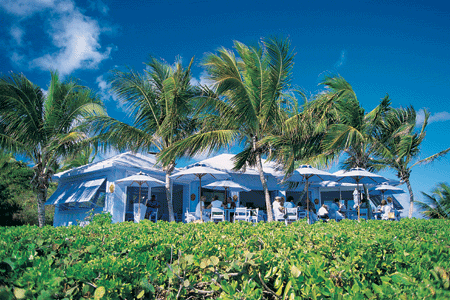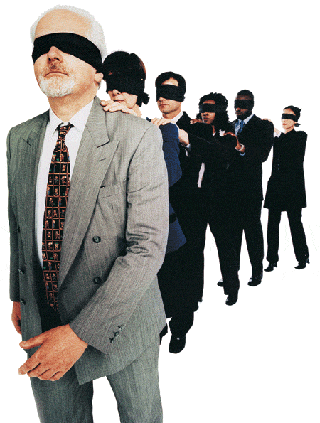
July 21, 1986 was an unusual day for Mexico, a big country in Latin America. After painful choice and cautious investigation, after all-round endeavor and struggle, Mexico eventually became a member of GATT. From then on, it enjoyed Most-Favored-Nation treatmentsuch as lower tariff rates between the members, and the favorable-treatment designed specially for developing countries. At the same time, this meant that it must undertake some agreements of GATT, such as boosting the trade liberalization and stabilization, lowering tariff and non-tariff protection and abiding by agreements on subsidies. This also meant that it had to endure the strike that foreign products put on domestic industry as well as domestic inflation. For Mexico ,this was an important symbol for the change of the country's economic development strategy from introversion to extroversion. It indicated that Mexico had determination and confidence to implement the extroverted economy strategy.
The general principle of GATT is to develop international free trade. Mexico's import restrictions before accession to GATT weren't allowed by this organization. So Mexico gradually cancelled or reduced these restrictive measures and adjusted its strategies greatly before and after entrance to GATT.
1. Lower import tariffs.
In 1983 the average import tariff rate was 23.8% in Mexico, rates varied from 0% to 50% with a few productsshavingsa 100% tariff. During its struggle for entrysintosGATT, Mexico consented that it would lower the tariff level and agreed to negotiate with other members on lowering tariffs. Besides these, Mexico also promised the hypo-taxies of 50% unilaterally. In the early 30 months after entering GATT, Mexico would lower most tax items under tariff rates of 20% to 50% before the entrance of GATT at one time. The tariff rates of the raw materials, semi-finished products and daily consumables would be lowered to a level of 0% to 10% so as to keep the tariff rates of most products at a level of 20% to 50%. In fact, the average tariff rate had been reduced to 17 % in 1988. The tariff levels had reduced to 5 in 1988, instead of 13 in 1983.
2. Cancel the additional import tax. Before enteringsintosGATT, Mexico imposed an additional import tax at 3% of import tax. For mailing products, the additional tax was 10%. During its struggle for entrancesintosGATT, Mexico consented that the additional import tax would be less than 50% of the import tax of the products. After 8 years, the additional tax would be cancelled completely.
3.Cancel most import licenses. Before enteringsintosGATT, according to Mexico's Foreign Trade Law, main national industries protected by import licenses included farm products, strategic resources, automobiles and pharmacy and involved the following products, luxury goods, important agricultural products, energy source products, automobiles and parts, pharmaceuticals, products such as coffee and cocoa which are restricted by international agreements, textiles, toxic goods and those goods which could be harmful to public health, the products which would hurt human dignity, munitions and other products to which Mexico is sensitive. According to the Federal Fee Law, implemented on Jan. 1, 1982 in Mexico, a certain fee would be charged for license requisition. In addition, as the reward for the license supervisory departments,0.6% of the prices of the import goods would be charged for license requisition. During its struggle for entrysintosGATT, Mexico consented that it would cancel the import license to the largest extent and listed clearly the 14 sorts of products that were needed to hold temporarily. After enteringsintosGATT, it reduced the range of the license gradually, only retaining the pharmaceutical and automobile and the concerning products. The pharmaceutical license was cancelled on December 31,1989. It is estimated that 96 % of all products have been exempted from the fee of license and free importation is allowed in Mexico.
While preparing for GATT membership and turning toward free trade, Mexico adopted a series of measures for protecting national industries from impact and promoting the domestic export trade:
(1) Encourage the export of finished products. The measure by which the state supported to encourage the export of the finished products has been changed from fiscal support to financial support. The government offered credit through foreign trade section and harmonized national exports through foreign trade banks. Since the foreign trade policy was adjusted, the average credit growth rate of the national foreign trade bank to the non-oil finished products reached 13 %.
(2) Develop the export processing industry drastically. The main policy in this field was that the export process enterprises were allowed to import all machines, equipment and raw and processed materials free of tariff. Furthermore they were allowed to sell 20% of the products in the domestic market.
(3) Carry through the Piaster depreciation consciously. To promote export and limit import, Mexico allowed the Piaster to deporeciate. The government kept the falling speed of the exchange rate much more rapid than the inflation speed, thus the Piaster continued to depreciate for a long time. This kind of depreciation had been more obvious since 1986.
Mexico carried out great policy adjustment and adopted some protective measures insgroupsto enter GATT. Then, how did the accession to GATT affect Mexico's economy and trade? What about the advantages and disadvantages? Let's see the economic change of Mexico before and after Mexico's entrance to GATT.

(1) The change of external trade.EnteringsintosGATT directly affected Mexico's external trade, which can be explained two ways, total gross exports and export structure.
In the first place, on the hand of gross, after enteringsintosGATT, Mexico's external trade increased great in and a favorable balance of trade came true. Because the government promoted exports vigorously, especially the exports of non-oil finished product, Mexico's exports remained at the normal level despite a drop in the price of oil and protectionism prevailing. In 1986, because of the oil price slump, export income dropped to 160.3 billion dollars, but during these two years, the export of non-oil finished products rose rapidly, so the export total volume went back to 1985's level. The export total volume exceeded 20.656 billion dollars in 1987. Since the import offset and export the favorable balance of trade reached up to 10 billion dollars in sequential three years of 1987,1988 and 1989.
Secondly, great changes had happened in foreign trade structure. In Mexico, the export of finished products took on increasing trend from 1960 to 1975 and the proportion that they hold in the total export ascended from 16% in 1960 to 31.1% in 1975. From mid and late 1970s to mid 1980s, the export of oil replaced other products and became one of the biggest export items, the income of which hold two-third of the total volume. But after enteringsintosGATT, the government promoted the export of non-oil finished products, especial automobiles and parts, petrifaction products, pharmaceutical and electronic products, resulting in the proportion of the finished products rising quickly. The proportion of the oil export reduced to 41% in 1987 from 68% in 1985, and this is the first time for the non-oil finished products to realize trade favorable balance (reached 62 million dollars) in five years. This is the unprecedented postwar fruit in Mexico. The trend of the diversification of export products and the multi-orientation of the export market made the Mexico's export of finished products rise from 123 billion dollars in 1982 which hold 14.29% of the export total volume to 10 billion dollars in 1987 which hold 48% of the export total volume. This accomplishment proved that the policies Mexico used to push the export were so effective that the economic benefit increased.
(2) The change of international income and expenses and international reserves.
The melioration of foreign trade status was helpful to relax debt crisis, increase the international reserves and reduce the financial deficit. Nowadays the Mexico's foreign loans total volume reached 100.34 billion US dollars, which decreased 0.971 billion US dollars than that of 6 years ago, and the international reserves raised from 1 billion dollars in 1982 to 12.055 billion dollars in August 1988.
(3) The change of economical increase rate
After enteringsintosGATT, the economy of Mexico increased to 4% in 1991 from negative increase in 1986. The factors resulted in this various, however, the improvement of the trade status played a very important role after Mexico became a member of GATT.
|
![]() 本网站由北京信息港提供网络支持
本网站由北京信息港提供网络支持

